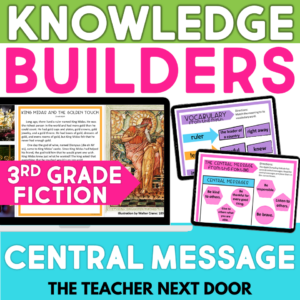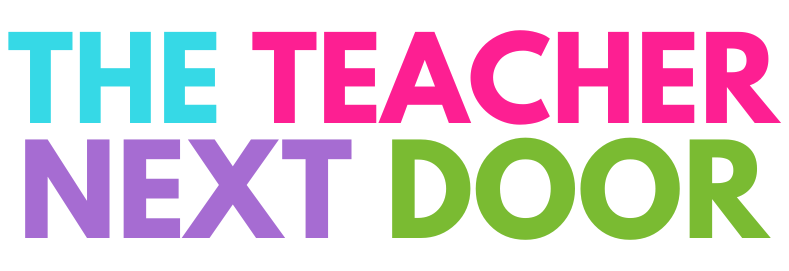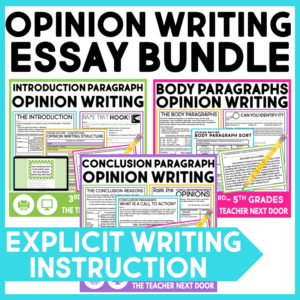
The central message of a story is super important for students to be able to identify, but unfortunately can be a tricky concept for kids to grasp.
Sometimes called the moral or lesson, the central message is the main thing that the author wants you to learn from the story. It can be about friendship, being true to yourself, being kind to others, or any number of other life lessons.
Whether your students are struggling to master this skill or you are just getting ready to start teaching central message, the following tips will help your students “get it!”
Tip #1: Start with a familiar story.
Using a story that is already familiar to students to discuss central message will be helpful, especially at first.

Already knowing the characters, main plot points, what the problem is, and how it is solved will mean students have more brainpower to focus specifically on the central message itself.
I don’t suggest skipping the actual reading of the story, even when using one that is well known to students. You want all of the kids to be referencing the same version of the story, and there are bound to be a few students who aren’t familiar with a certain story, regardless of how popular it is.
Most importantly, the purpose of this skill is for students to read a text and then determine the central message, not to tell the central message of a story that they already know. The goal is for students to read ANY story and be able to determine the central message, so it makes sense to have reading the story be the first step.
You’ll also be building on this skill as the year goes on, and requiring students to reference and cite details from the text. Modeling this skill from the start is key!
Tip #2: Start Small
My second recommendation is to start with short versions of the stories. Cutting out all of the fluff and smaller details will allow students to focus more easily on the central message.

Shortened versions will also prevent students from getting overwhelmed by the text. When asking them to do something completely new, it’s important to make sure the task feels manageable to kids.
Keeping it short and sweet will allow kiddos to focus on the big picture; what’s happening in this story and what am I supposed to learn from it?
Tip #3: Agree to Disagree
Another important thing to note is that we aren’t always going to agree all of the time! Some stories have more than one possible central message. Different people can have different interpretations, and that’s totally okay!
For example, one person may read “Jack and The Beanstalk” and say the central message is “fortune favors the bold.” Someone else could read the same version of the story, but say what stood out to them was the idea of “good versus evil.”
Everyone has their own unique set of experiences that will affect the way they see the world. The important part is that you can explain your thinking and support your opinion with details from the text.

Resources
Looking for some easy-to-use central message practice that packs a punch? Check out this Central Message Traditional Literature game, which includes print and digital versions. It includes 16 different task cards, a game board, and a recording sheet. A variety of different fables and folktales are included.

You may also be interested in this Central Message Digital Reading activity. It’s available in Google Slides and is NO PREP! The activity is interactive, with moveable pieces that your students will enjoy.

Both of these resources would be great for distance learning, literacy centers, independent work, homework, and more.
Want to learn more? Check out these posts below!
How to Teach Paired Texts in Five Days with a Free Reading Unit
Teaching Nonfiction Text Featured
Compare and Contrast Activities
















